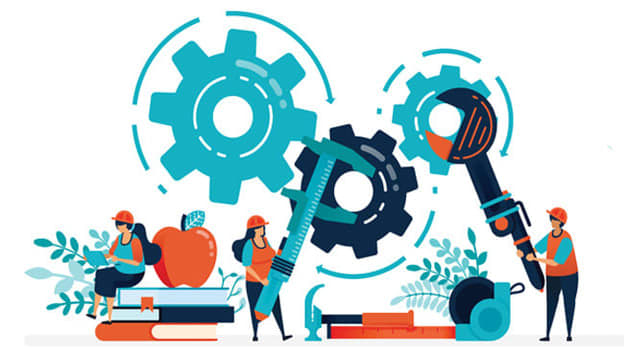The pitfalls to avoid in your HR automation journey

HR leaders continue to face an unprecedented amount of disruption. As the business landscape evolves, so do the expectations from HR leaders. During the pandemic, CHROs were primarily responsible for ensuring business continuity and employee safety. The focus was on setting up secure and reliable infrastructure to support employees to work without travelling.
Post-pandemic, employee expectations about work environments, flexibility, and benefits have undergone a seismic shift, and the challenge is retaining top-performing employees. Compensation is no longer the chief parameter that determines employee satisfaction. Instead, organizations have realized the power of the softer human factors in driving employee engagement. These include manager effectiveness, workforce diversity, recognition, and career development. As a result, HR teams are working towards creating well-rounded value propositions for employees focusing on their overall well-being.
As organizations urge employees to return to the office, HR leaders ensure higher engagement and productivity levels from employees struggling with change fatigue. Most enterprises have opted for hybrid workplaces, with only a part of the workforce working from the office. HR teams must constantly meet the challenge of building strong company culture and interpersonal connections in remote or hybrid work environments.
Starting With the Automation Journey for CHROs
Before starting the HR automation journey, CHROs must be mindful that it is not a technology-led effort. They must begin by objectively assessing the current state of HR process maturity, mapping out organizational inefficiencies, and understanding employee expectations. Also, it is essential to have a top-down approach to planning HR automation journeys. The goals must align with the overall strategic objectives of your organization. The top leadership must have the necessary conviction, a solid business case, and effective communication strategies to drive HR automation success.
A closer look at the pitfalls
Rigid Legacy Processes and Systems
HR automation success cannot be driven solely by technological competence or software capabilities. For example, RPA enables automating repetitive, mechanical processes such as payroll calculations or candidate reference checks. However, RPA can only ensure correct process outputs if the process design is good, the calculation algorithm is correct, or the input data is low quality. The following are prerequisites for effective HR automation:
- Processes Reengineering: Automation platform designs are generally in line with industry-standard HR processes. It is imperative to focus on redesigning your HR processes to align with industry best practices. Vertical-specific or enterprise-specific capabilities may not be in-built into the software. Customizing the software for complex processes that are inconsistent or dependent on many variables can be time-consuming and prove futile.
- Legacy Systems Management: HR automation systems must integrate with numerous other enterprise applications like financial and accounting platforms for data transfer. You may already be using standalone HR automation apps that only automate a specific part of the employee lifecycle. You must have a clear roadmap for upgrading, replacing, or integrating existing systems with the enterprise-wide HR management system you implement. Since this deeply affects your employees' daily work, managing their expectations about system changes is also crucial.
Weak Governance
HR Automation is an enterprise-wide program affecting all employees and business units. Therefore, you must ensure the correct governance structure and fix accountability to ensure that the project is delivered on time and within budget.
- Ownership and Control: One of the worst pitfalls is viewing HR automation as a technology project and assigning ownership to the IT team. Responsibility for ownership must lie with the HR leaders of your organization. HR teams must coordinate with other departments to ensure that product selection and implementation are aligned and communicated across the enterprise.
- Data Governance: Multiple versions of data across HR functions and incompatible data formats can pose system integration challenges. Therefore, ensuring the deduplication of input data and consistent syntax for accurate reporting and HR analytics is essential. Data privacy and security are also crucial components of HR data governance frameworks.
Inadequate Change Management
Successful HR leaders manage change effectively across the automation journey beginning in the planning stages till enterprise-wide adoption.
- Stakeholder Involvement: HR automation must be a top long-term priority for your CXOs. They must involve managers across functions right from the planning process. Communicating the expected benefits and the importance of HR automation ensures that you secure stakeholder buy-in, and they can contribute meaningfully to the initiative.
- Training: Pre-roll-out training ensures that your teams are well-versed with the software, process changes, and policy modifications necessary for smooth transitioning. Adequate training translates into higher adoption, which drives higher ROI. Conversely, a lack of coaching could lead to change fatigue and low-quality data for reporting and analytics.
- Cultural Change Management: It is crucial to consider how your employees perceive the changes occurring due to HR automation. If there are substantial changes in their roles, workplace environments, team dynamics, or performance evaluations, you must actively communicate with them to equip them appropriately.
Lack of Prototyping and Testing
Successful HR automation requires an agile approach. Incremental, iterative implementation is likely to succeed more than a big-bang approach.
- Prototyping: If your HR function spreads across geographies or business units, it makes sense to prototype and validates the ROI before implementing the HR software on an enterprise-wide basis. It provides an opportunity to understand data and process challenges that may present in the broader implementation. It also enables generating stakeholder buy-in with tangible results.
- Testing: A lack of testing can result in post-go-live glitches, low adoption rates, and inaccurate insights. It is crucial to comprehensively test the HR automation software across user categories and use cases. It is also essential to check it for seamless scalability from a long-term perspective.
The Promise of Automation as the Panacea
HR tech can automate every aspect of HR operations - from routine operational tasks such as payroll, asset management, and attendance management to long-term strategic goals like employee experience design and talent development. The sheer breadth of capabilities can lure enterprise leaders into thinking of HR automation as the ultimate answer to all that ails the HR function.
Enterprises must understand that though HR automation is fundamental to solving the current HR challenges, it is not a silver bullet for cultural, operational, and people issues. Several critical success factors determine its effectiveness. Enterprises with a clear vision, strategic backing, measurable KPIs, and an iterative implementation approach are more likely to succeed in driving high ROIs from HR automation initiatives.
Modern cloud-based HR management systems coupled with AI solutions can streamline the entire gamut of HR operations. However, the success of automation efforts depends on multiple non-IT parameters like HR process maturity, robust governance mechanisms, and effective change management. Therefore, selecting the right cloud-based HR automation software partner with agile capabilities is paramount for success.






